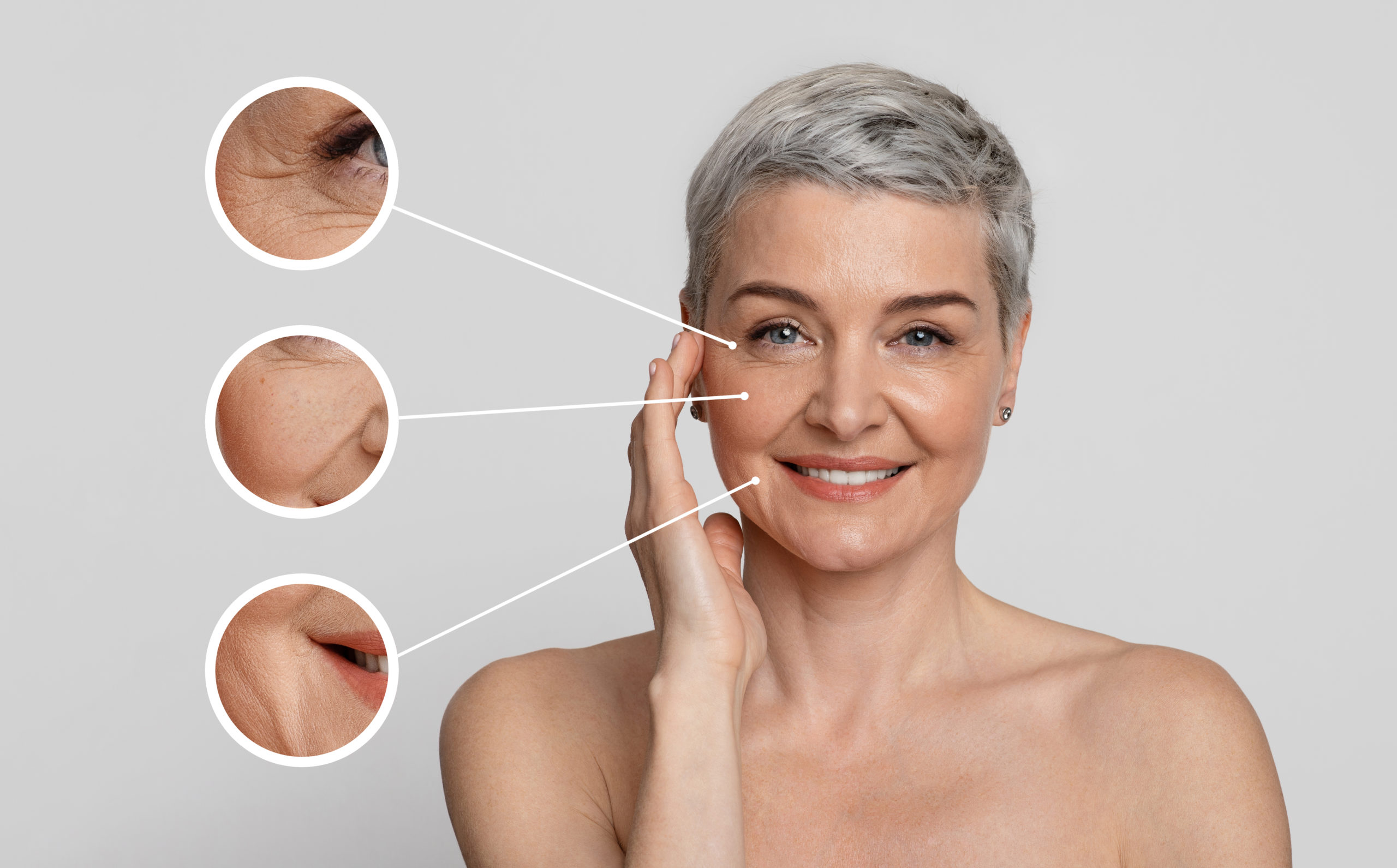
Believe it or not, scientists spend lots of time studying how our faces age. Thanks to them, we know quite a bit about common aging patterns. What is interesting is that even one small area can have a visual effect on how we see the rest of the face.
Conversely, small improvements to certain features can create a surprisingly dramatic difference. With advancements in how we can address and minimize signs of aging, we can often turn back the clock on many of these areas that age the fastest.
How Faces Age
Aging is a completely natural process that we all experience. But what really happens as we age? There are many factors that contribute to how we age.
Collagen
Collagen is a protein that is very common throughout the body. One of its main functions is to provide structure to tissue, including the skin. As we age, our bodies produce less collagen. As a result, our skin can lose some of its structural support and become less elastic.
Wrinkles
In connection with this decrease in collagen, lines and wrinkles can form on the skin. When we make facial expressions and other facial movements that are repeated over time, less collagen means our skin does not bounce back as easily. Permanent creases form in the skin as a result.
Fat Distribution
As the structural support of collagen wanes, the fat underneath our skin does not maintain its place as it once did. Fat pads can sag and lose volume. This translates to a loss of volume in parts of the face, as well as a sunken appearance. Furthermore, sagging areas such as cheeks can actually contribute even more to wrinkles and lines elsewhere on the face.
Which Areas Age First?
Eyes
Your eyes are often the first thing people notice, and unfortunately, they can show your age. The skin around the eyes is quite delicate and more susceptible to wrinkles. Our eyes also make plenty of expressions, which adds to wrinkles. Loss of volume in the face can cause hollows to form under the eyes as well.
Forehead
The forehead is used a lot in facial expressions; think about how your forehead reacts when you are surprised, worried, stressed, confused, and happy. All this muscle movement under the skin means more wrinkles over time.
Cheeks
The cheeks are not an area known for getting wrinkles; instead, this feature is susceptible to volume loss and sagging. The cheeks make up a large portion of the face and include fat pads under the skin that can droop. This can have an impact on other areas of the face, create wrinkles and creases around the jowls, contribute to smile lines, add to sagging undereye areas, and more.
Lips
Lips themselves lose volume as we age, becoming thinner and developing lines. In addition, around the lips, we can develop fine lines.
How to Address the Early Signs of Aging
A lot can be done to combat these signs of aging – and no, we don’t mean surgery. Less invasive treatments with reasonable price tags are here. You have certainly heard of Botox injections, which can relax muscles and reduce the type of wrinkles caused by facial expressions in many of these areas.
Dermal fillers offer another approach, addressing the loss of volume and plumping up sagging facial features. The added benefit to these injections? They can boost the production of collagen, which means increasing anti-aging effects following treatment.
Straightforward aging solutions are within reach with cosmetic injections and fillers. If you are interested in exploring what you can do to treat the earliest signs of aging, schedule a no-obligation consultation with our experts today!
